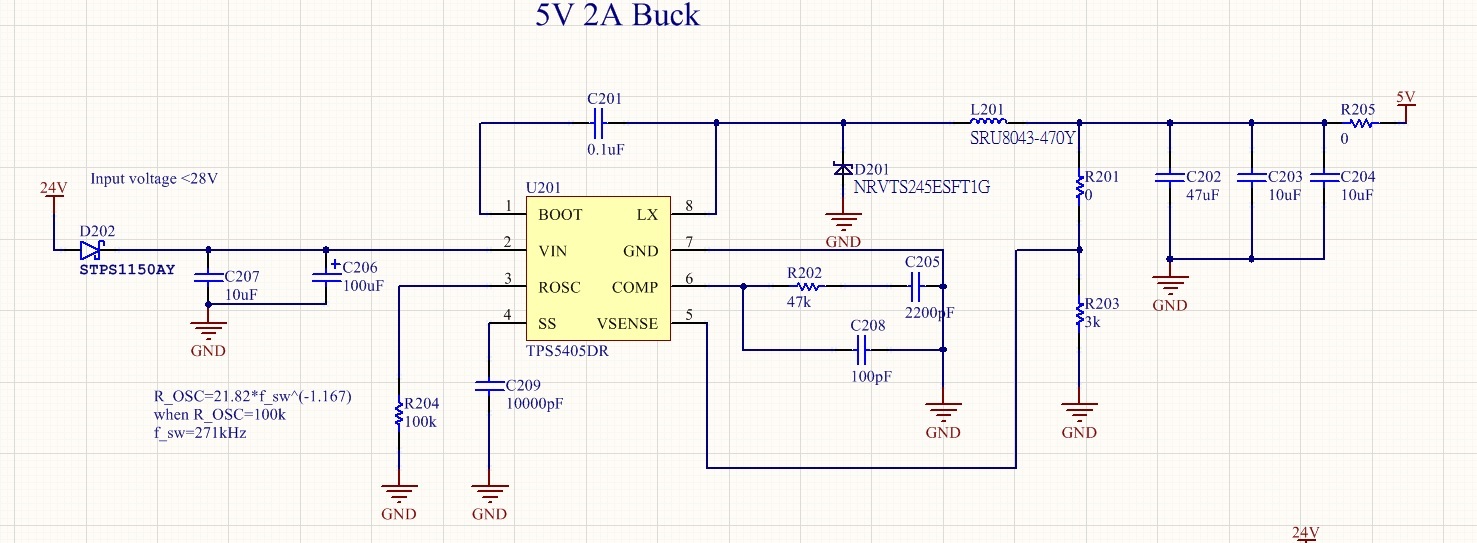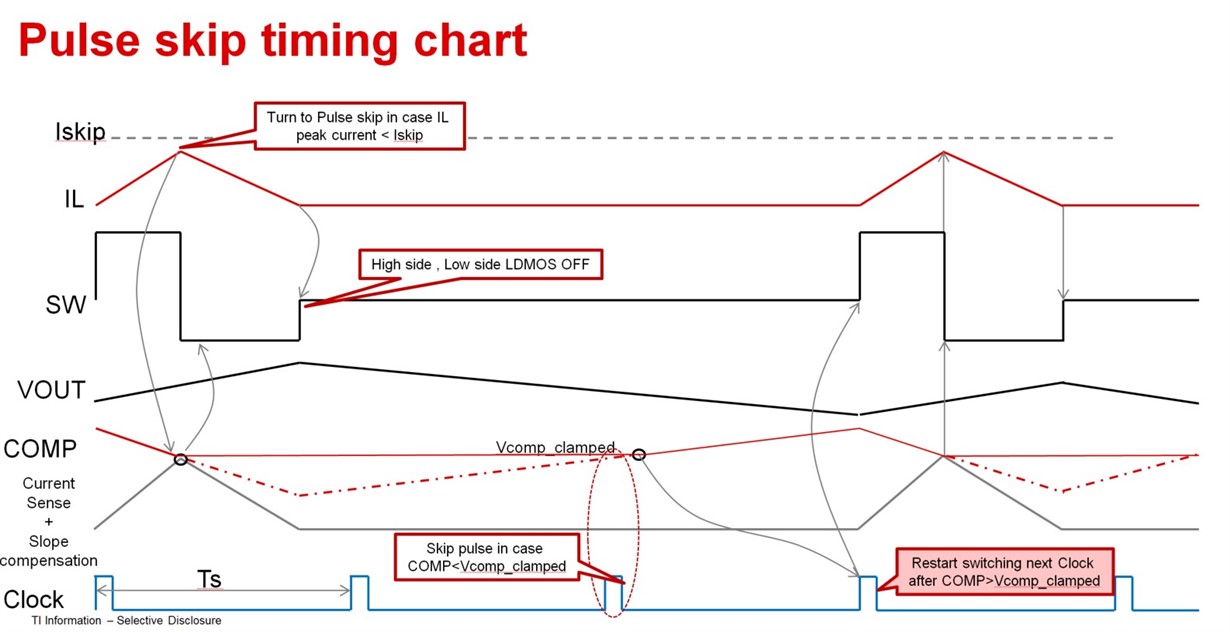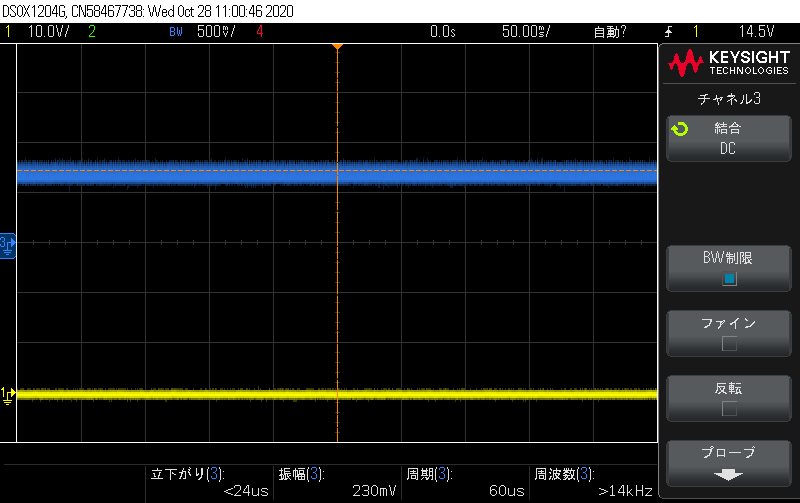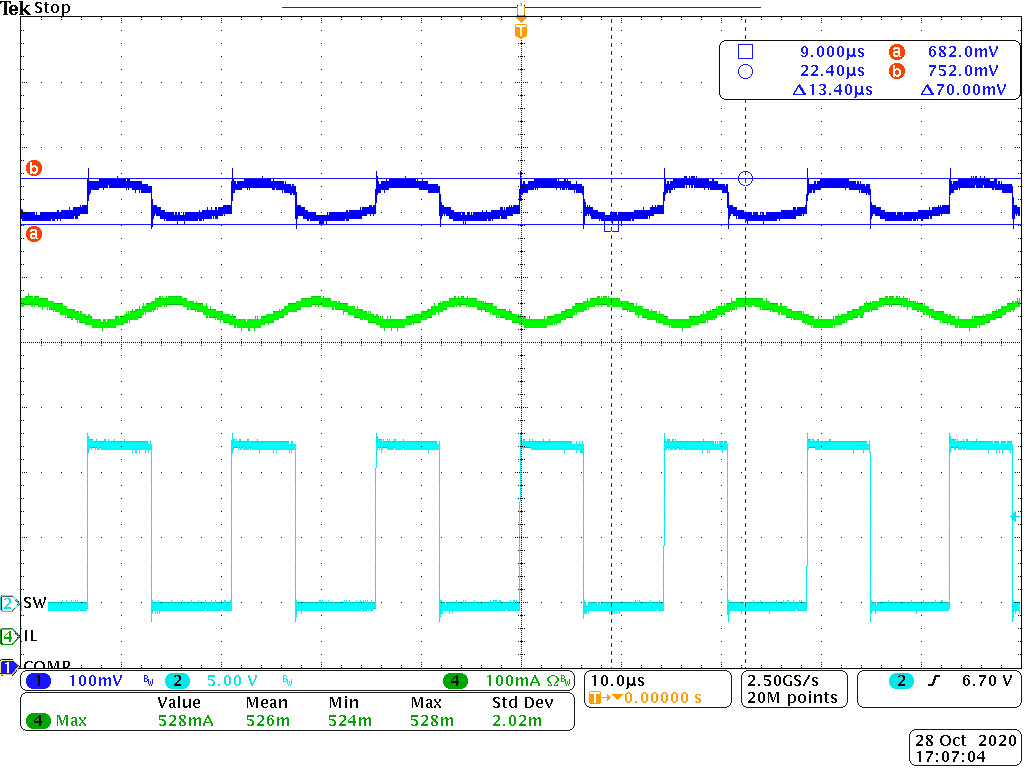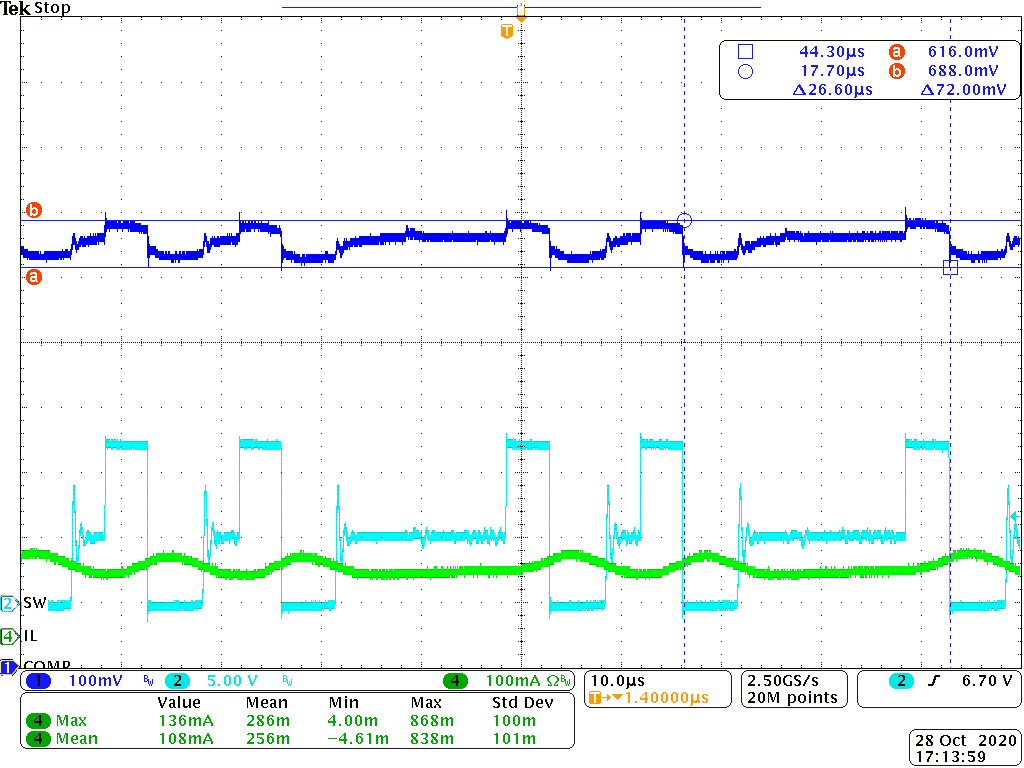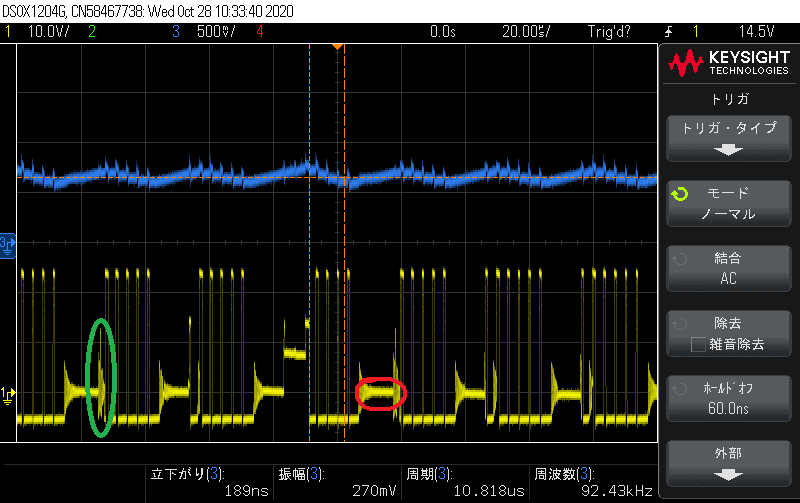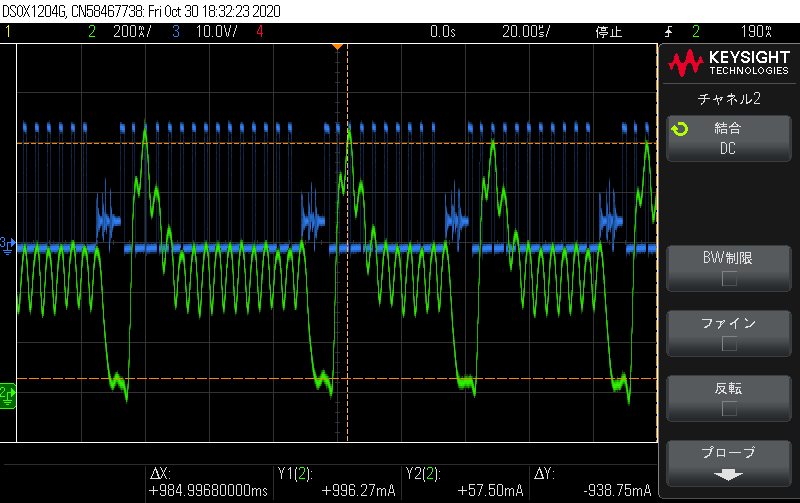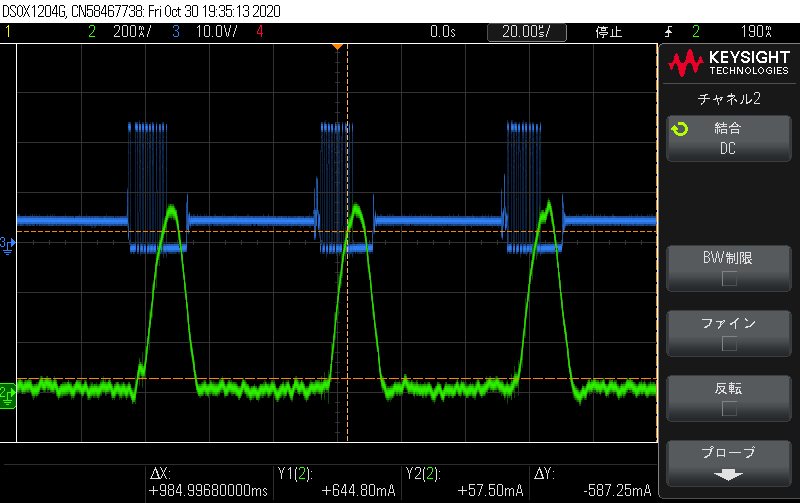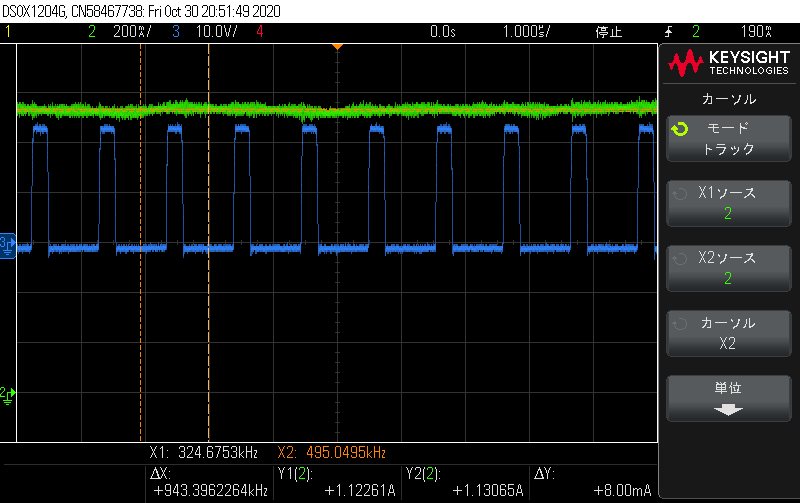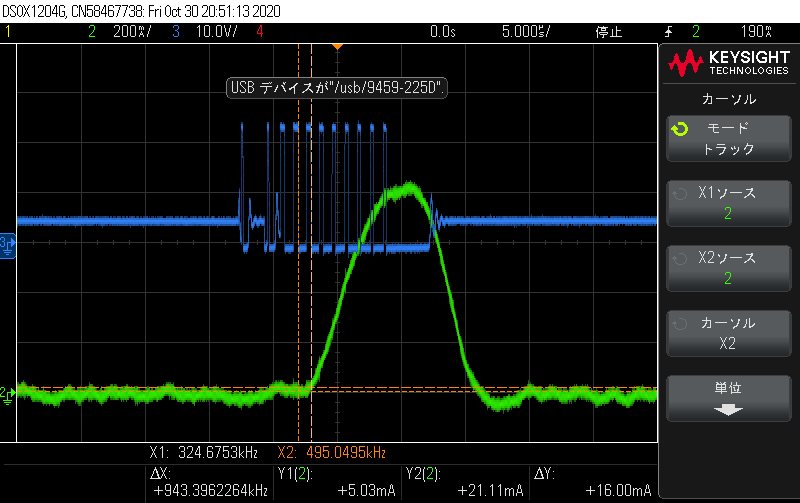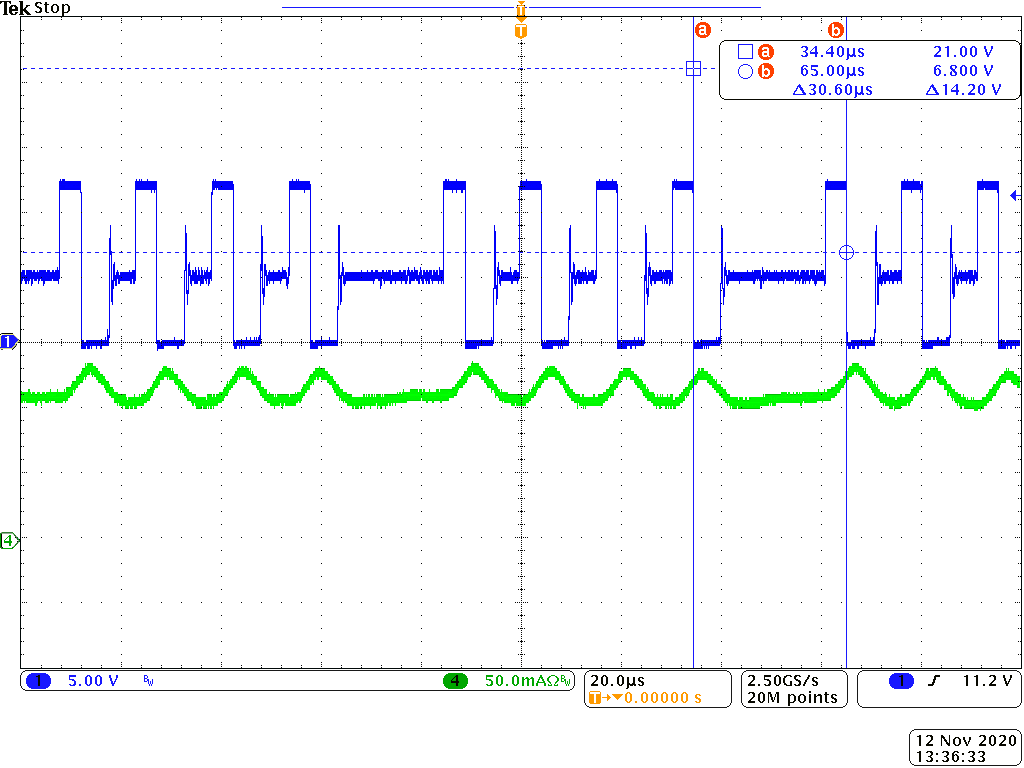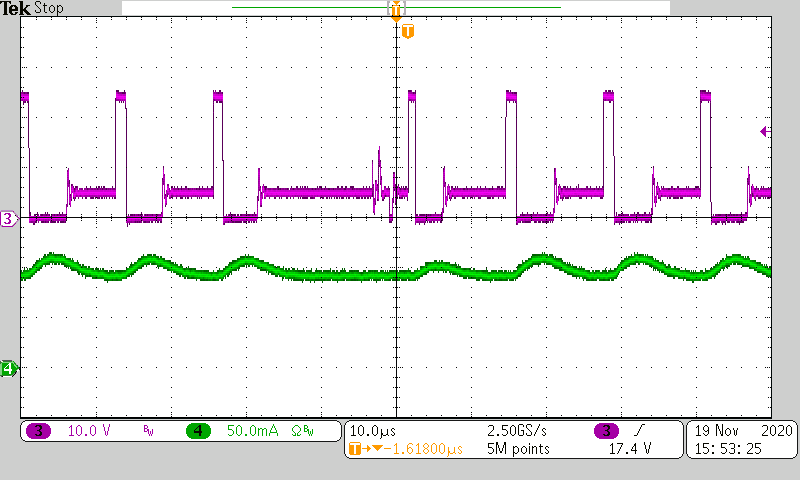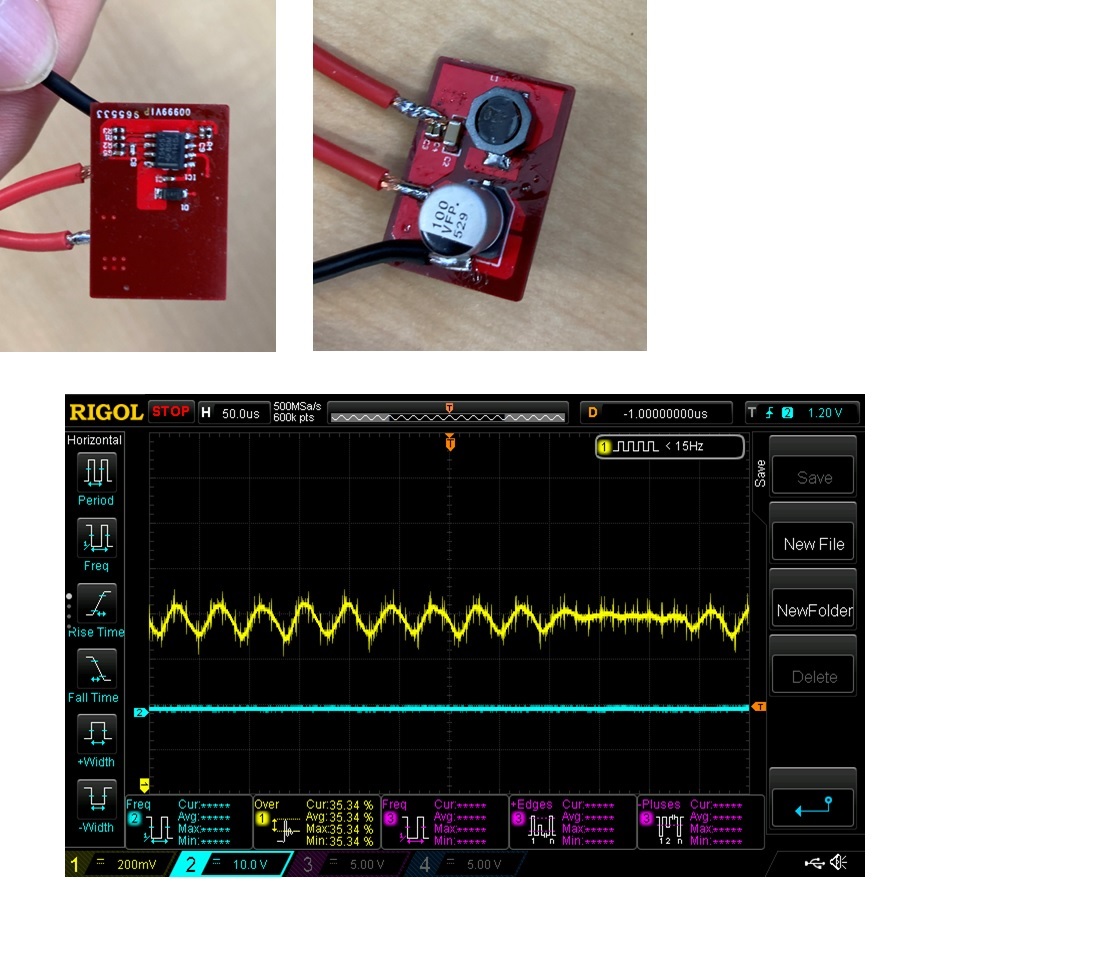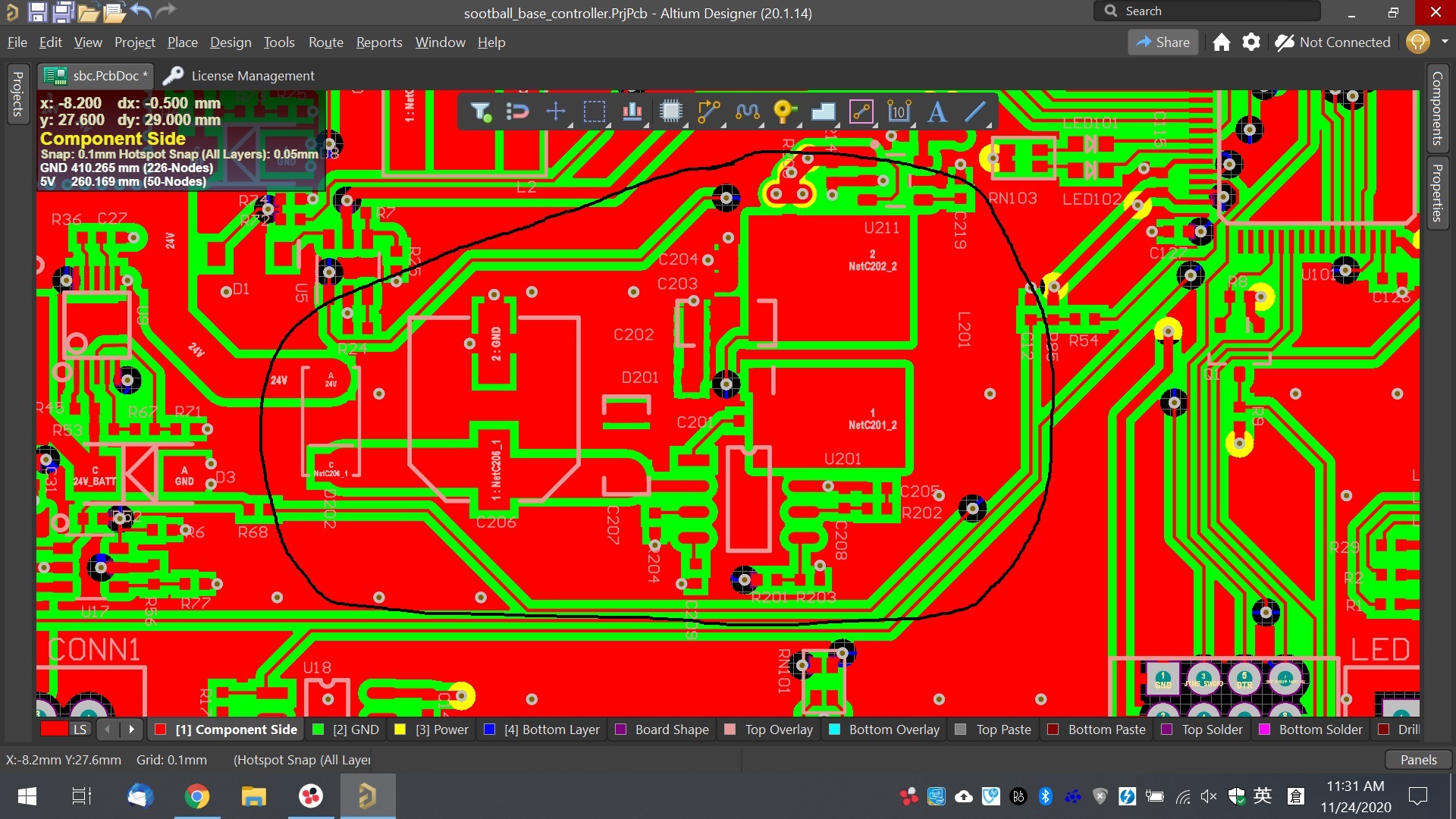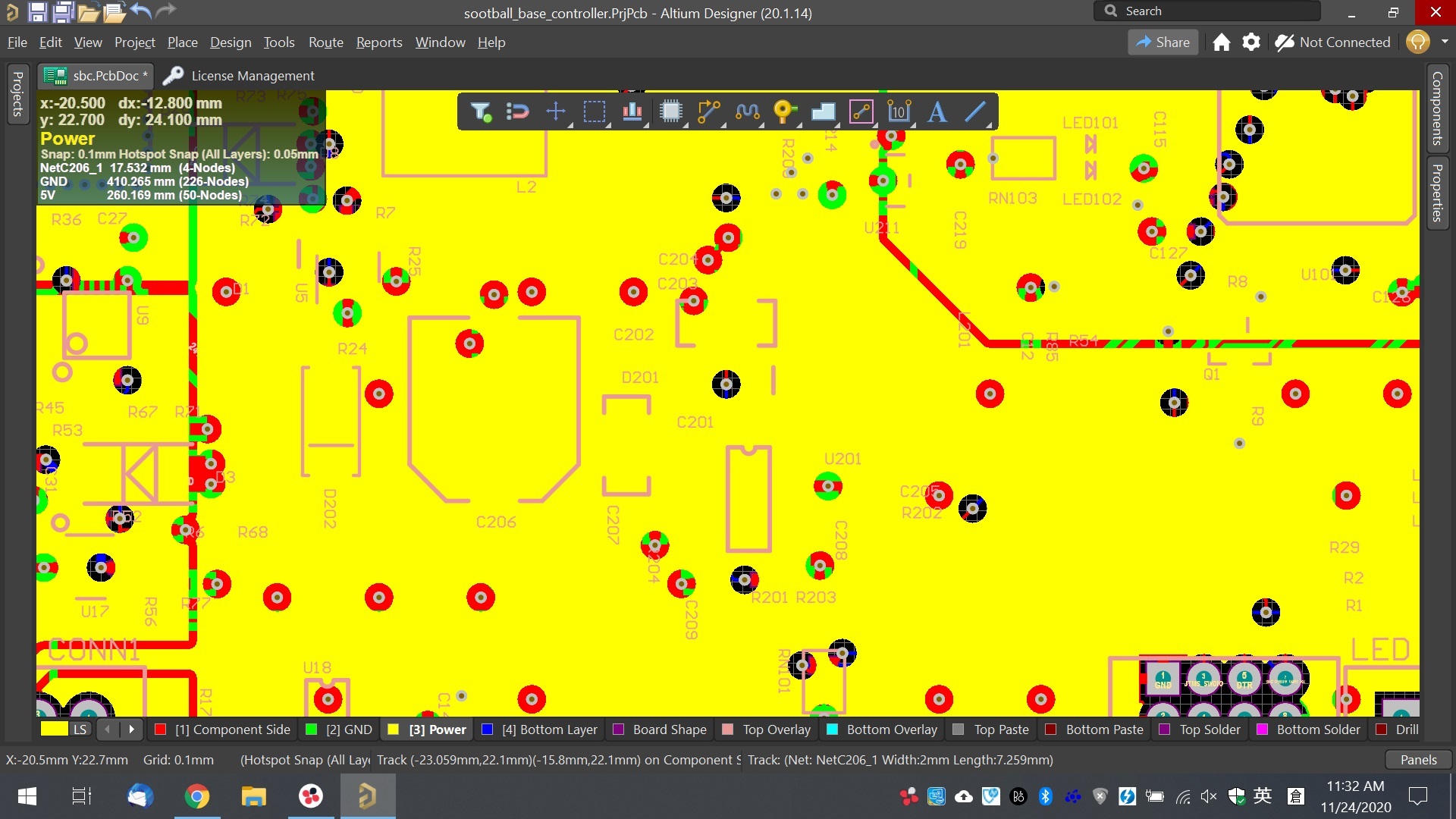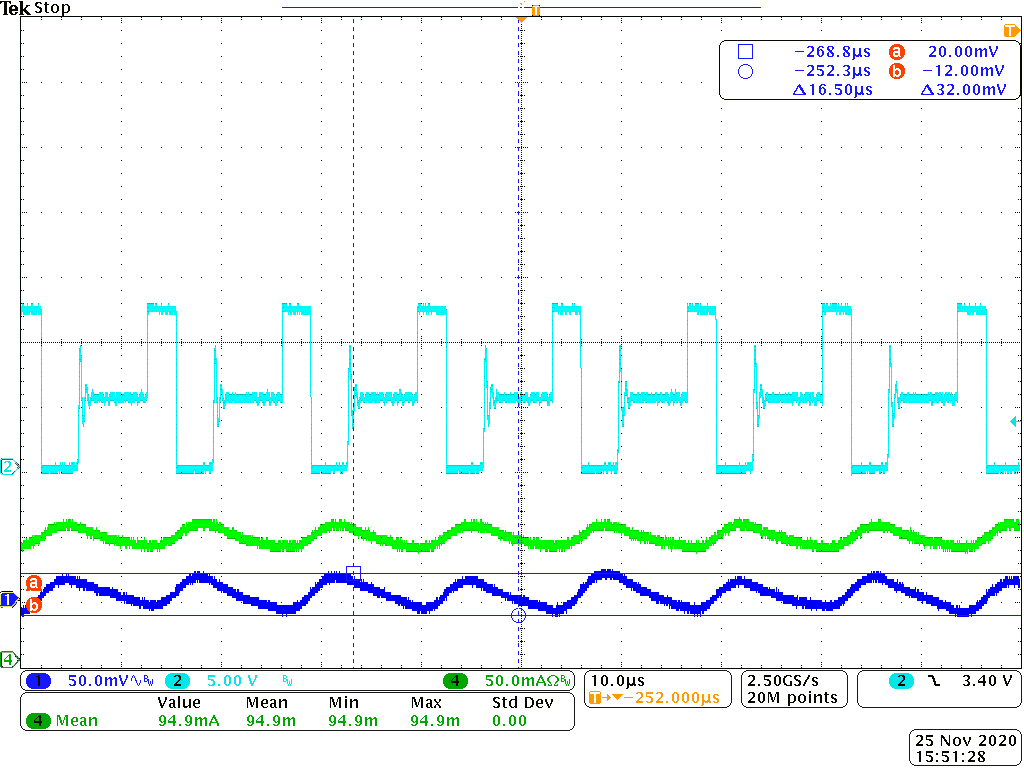Other Parts Discussed in Thread: TPS54331
Hi Ti
I amd using TPS5405 with some problems:
Here is what I wrote to Ti's support few days ago
The COMP pin is always 0.6V, and the IC does not exit pulse skipping mode until the load current is more than 0.7A.
And there is large voltage ripple under pulse skipping mode, the SW frequency is set to 271kz, but in pulse skipping mode, it switch as burst of 271khz pulse with around 20khz frequency.
The input voltage is between 22 to 29V.
More details
I have two version of board using TPS5405, both board is exactly the same circuit and PCB layout, except one has add some resistors and other IC, the total additional load is about 30mA (the new board).
The COMP pin of both board is always 0.6V
New board's voltage ripple is larger than the old one.
I could hear acoustic noise from inductor and capacitor of the new one.
New board exit pulse skipping mode when the load is above 600mA, the old one exit pulse skipping mode when the load is above 400mA.
I already tuned the compensation circuit of the new board, it is a little bit better.
But what cause this problem? Why the COMP pin's voltage does not works as datasheet specification?


